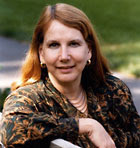Professor's Baldwin and von Hipple IV B
In this entry I will highlight many pertinent points of Baldwin and von Hipple's research. Much of the context and content of their work is new, and as they state, not necessarily covered before.
However, to our knowledge, there has been no systematic thinking about the conditions under which each model is likely to appear, and whether each is expanding or contracting relative to the other two. To make progress on these question, it is necessaryto develop a theoretical framework that locates all three models in a more general space of attributes. That is our aim in this section.People, Ideas & Objects is based on open collaborative innovation. Based on the modular Draft Specification as its starting point, the contributions of users is necessary to cover the scope of work undertaken in the oil and gas industry. This scope of work has never previously been undertaken due to the communication and design costs prior to the Internet were prohibitive. Only today with the Internet and the tools that are available can we seek to codify the understanding of "what" and "how" the oil and gas industry operates as. This codification is being captured here in the Preliminary Specification that will form the basis of the People, Ideas & Objects application modules. It is the technology that is enabling this to be undertaken. Use of the Joint Operating Committee was the hypothesis of this projects in the May 2004 Preliminary Research Report, and is therefore, the underlying reason that this project holds the promise of "resolving every administrative problem in oil and gas in the last fifty years." (Not my words.) It is the "aha" moment that people have when they realize the Joint Operating Committee is the key to enabling these performance and innovation based opportunities.
In the particular branch we are most concerned with, organizational forms and industry structures are taken to be endogenous and historically contingent (Chandler, 1962, 1977; Wlliamson, 1985, 1991; Nelson and Winter, 1982; Aoki, 1984, 2001; Langlois, 1986a, 2002; Baldwin and Clark 2000; Jacobies, 2005). Different forms may be selected to suit different environments and then adaptively modified. Thus organizational forms emerge in history and recede as technologies and preferences change.I highlight the last sentence of that quotation as we are now at the point where changes can be implemented. Our economic challenges today require us to undertake these types of organizational changes. What has brought us to this point is no longer capable of carrying us further. And indeed we will fall further behind if these organizational changes are not implemented in a timely manner. For the Community of Independent Service Providers (CISP) it is important to become involved in this project as its sustainability is represented in the fact that organizational forms do not change that frequently.
We have seen the 20th Century benefit from the work done by the hierarchy. Clearly society is better off today then if we had not had the model of organization we use so systemically in business today. We have also benefited from the use of computer technologies that have enabled the reach of the hierarchy to span far greater then previously possible. This is where the oil and gas industry became too focused on the hierarchy as opposed to the Joint Operating Committee. As companies employed greater levels of Information Technology, they began to focus on internal needs of the bureaucracy and avoided the business of the business as represented in the many Joint Operating Committee's of the firm. To address those JOC's it would have required to undertake the design that is being done in its first iteration in the Preliminary Specification. Baldwin and von Hipple note that the design costs and communication costs would be too great to overcome in any time prior to the Internet. Now these costs are substantially below 1/3 of 1% of the industry. Viable by any measure.
Finally in contrast to virtually all prior work except for Chandler (1962, 1977), we take an explicitly technological approach to the question of viability. Fundamentally we assume that in a free economy, the organizational forms that survive are ones with benefits exceeding their costs (Fama and Jensen, 1983a, b). Costs in turn are determined by technology and change over time.Costs as represented by this projects Business Model are minuscule when compared to the revenue streams of the oil and gas industry.
Adopting Chandler's logic, we should expect a particular organizational form to be prevalent when its technologically determined costs are low, and to be ascendant - i.e., growing relative to other forms - when its costs are declining relative to the costs of other forms.
Today, design costs and communication costs are declining rapidly, and modular design architectures are becoming common for many products. In the rest of this section, we argue that these largely exogenous technological trends make single user innovation and especially open collaborative innovation viable across a wider range of innovation activities than was the case before the arrival of technologies such as personal computers and the Internet. We have seen and expect to continue to see, single user innovation and open collaborative innovation growing in importance relative to producer innovation in most sectors of the economy. We do not believe that producer innovation will disappear, but we do expect it to become less pervasive and ubiquitous than was the case during most of the 20th century.To participate in this community, please join me here. And if you are part of our targeted market, please contact me here to financially support this community.
Technorati Tags: People's Baldwin Harvard von-Hipple MIT Innovation Value-Proposition

